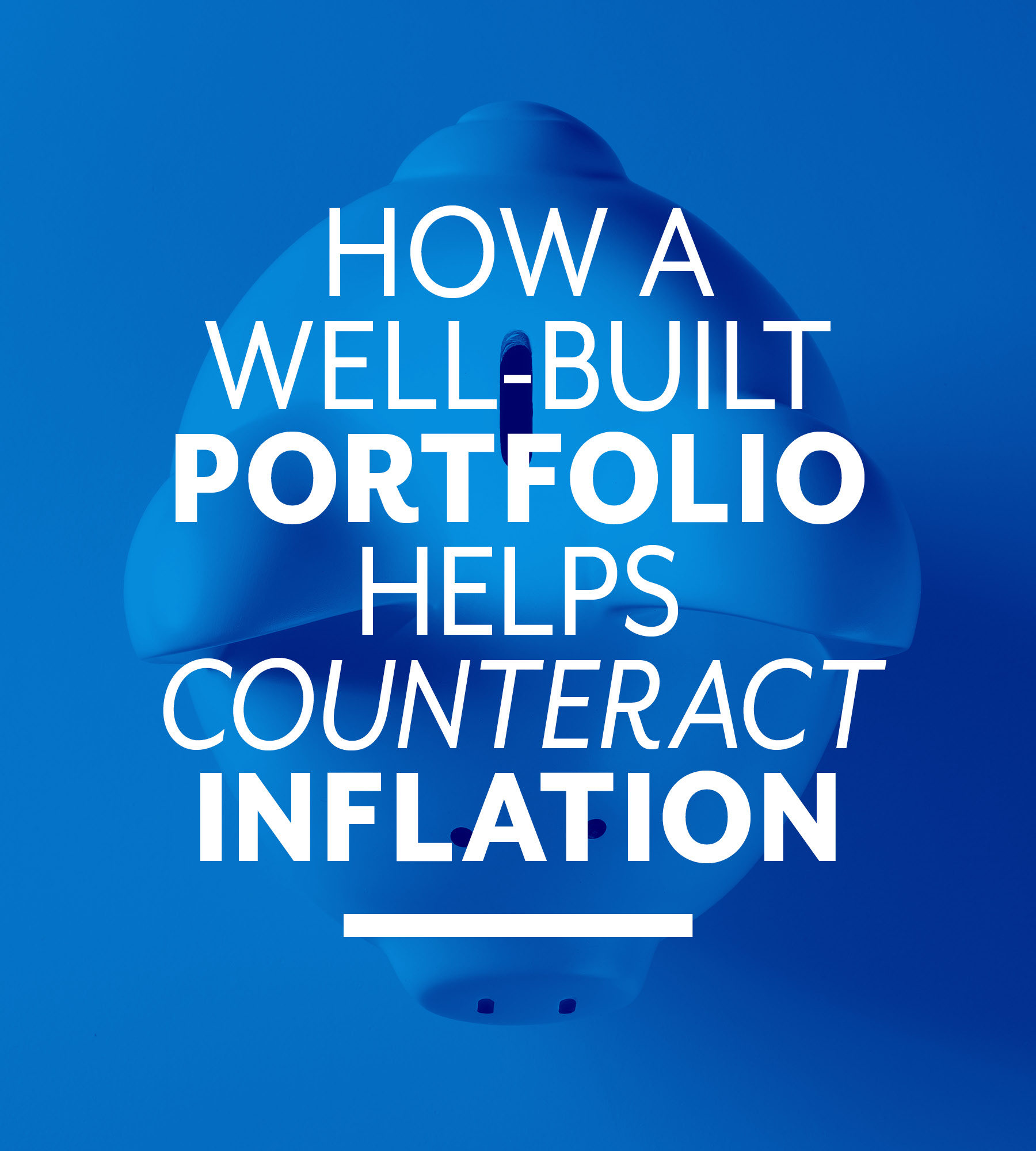Language
You can read the magazine in one of the following languages
Geolocation
You can read the global content or the content from your region

Inflation has been in the news a lot lately. The high inflation rates of the last couple years have significantly eroded Americans’ purchasing power on a variety of goods and services. The last time inflation spiked at these levels was in the late 1970s, so even the most senior corporate leaders have rarely had to combat this issue.
Fortunately, a well-built investment portfolio can help counteract the effects of inflation.
While inflation puts a strain on short-term spending and saving, it can be especially detrimental to long-term investment accounts if not properly planned for. Fortunately, a well-built investment portfolio can help counteract the effects of inflation. The following tips can help preserve and grow the value of your investments in the face of inflation.
One of the most effective ways to position your portfolio to weather inflation is by investing in a diversified mix of asset types, such as stocks, bonds, real estate and commodities in both the public and private markets. Different asset classes tend to perform differently during various stages of the market cycle. By maintaining a diversified portfolio, you reduce the risk of all your investments being impacted in the same manner at the same time.

Historically, equity returns have outperformed inflation over the long-term. Investing in a diversified mix of both large cap and small cap stocks, both domestic and international, can help provide you with the long-term growth potential you need to offset rising inflation and protect your portfolio’s purchasing power. By owning stocks, you own the companies raising the prices causing inflation.
A broadly diversified portfolio protects against market risk — including inflation. Far too often, investors fail to be fully diversified because they have no investments within the private markets space. Private market investments, like private credit and private infrastructure, have been fantastic portfolio diversifiers and have built-in dynamics, such as floating rates and inflation adjusters, to combat the challenges of inflation. Creative Planning includes private market investments as part of its core investment philosophy.
Treasury Inflation-Protected Securities (TIPS) are government bonds that change value based on the consumer price index and can provide a hedge against inflation. They offer fixed interest payments that can help your investment keep pace with rising prices. But because it has inflation in its name, that doesn’t mean it’s the holy grail of protection.

TIPS lost money in 2022, along with nearly all other types of bond investments.
Performance in TIPS is driven more forcefully by changes in perceived levels of future inflation instead of by actual inflation itself. TIPS lost money in 2022, along with nearly all other types of bond investments. This loss could be a surprise for investors misled by its moniker.
Tangible assets, such as real estate and commodities, have historically helped hedge portfolios against inflation. Real estate investments have the potential to appreciate in value and generate rental income, which can rise with inflation rates. Commodities tend to retain value during inflationary periods.
When planning for inflation, it’s important to regularly rebalance your investment portfolio. Rebalancing is the process of selling off outperforming assets in order to invest in lower-performing assets. While this practice may seem counterintuitive, it helps prevent your allocation from drifting too far from your target investment ranges.
Adding to a lower-performing asset can be difficult, but it’s important to remember the reasons it’s in the portfolio in the first place. This practice helps offset inflation because it prevents one asset type from dominating your portfolio and throwing off your risk exposure.
It’s never pleasant to see investments lose value, but it can be even more painful to watch so-called ‘conservative’ investments, like bonds, decline. By some measurements, 2022 was the worst year for bonds ever, with even high-quality bonds losing 10 percent or more. An additional component of the rebalance discussed previously is to look for losses you can bank to help offset eventual gains.
The impact on an after-tax basis for total returns over the long run can be extraordinary. You don’t have to – and shouldn’t – radically readjust the underlying asset allocation of a well-diversified portfolio to undertake this prudent exercise. While a number of advisory firms engage in tax-loss harvesting, many only start the process in December as the tax year is coming to an end.

Past performance of any market results is no assurance of future performance.
However, tremendous opportunities exist throughout the year (think of the wild markets in March 2020) that are missed if an arbitrary adherence to the calendar drives tax-loss harvesting decision-making.
Periods of high inflation often coincide with challenging market conditions. Economic factors are constantly changing and evolving, so it’s important to regularly review your investment portfolio. This practice will ensure your portfolio continues to align with your goals and remains positioned to weather the prevailing economic landscape.

Peter Mallouk
Contributor Collective Member
A successful financial advisor as well as a lawyer, Peter Mallouk has received wide acclaim for his work in the world of wealth management. Since 2004, he has led Creative Planning and its family of companies to provide comprehensive wealth management services to clients across the United States and abroad. He is passionate about providing financial education and resources to individuals, families and business owners who have typically been underserved by the financial services community. Peter is a regular contributor to Creative Planning’s Insights, co-hosts the ‘Down the Middle’ podcast and appears frequently on national financial news outlets. Learn more at https://petermallouk.com/